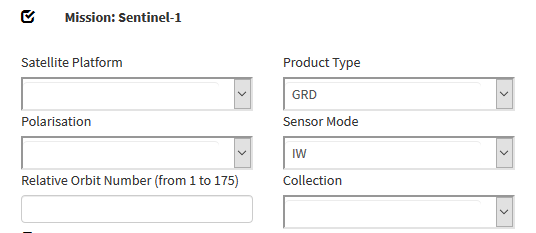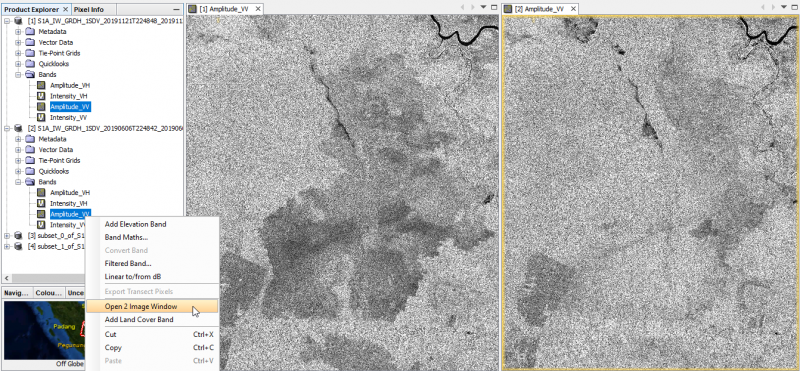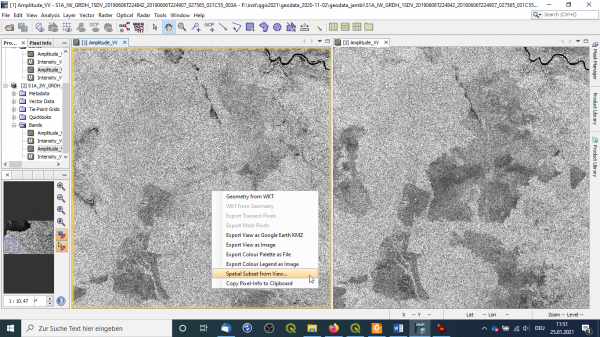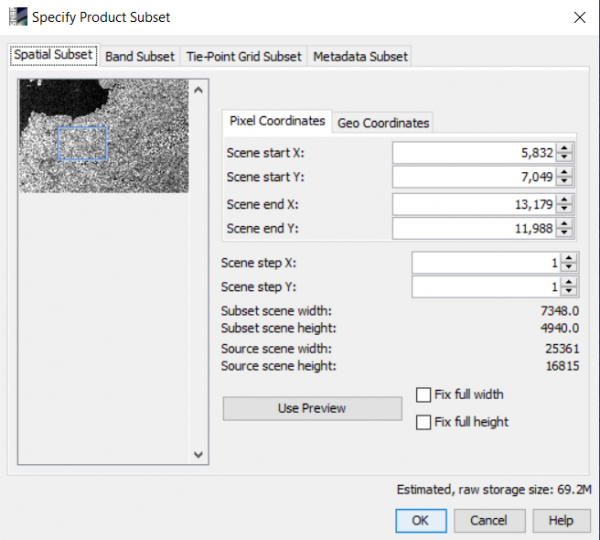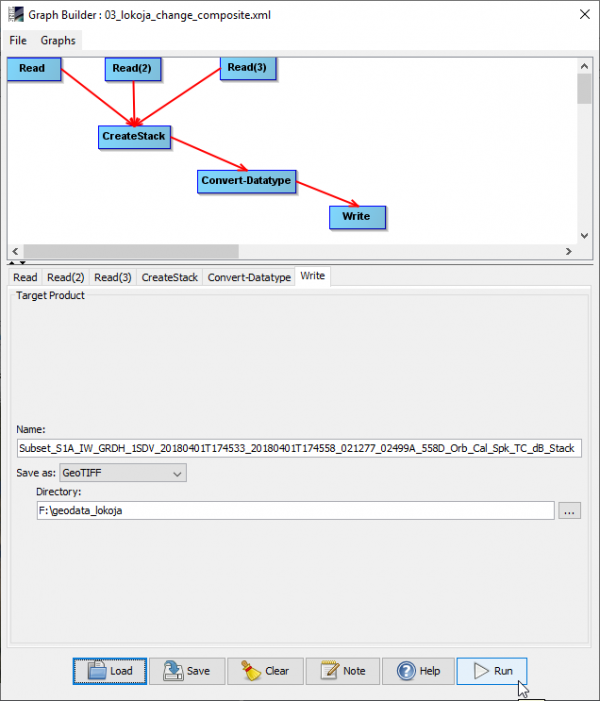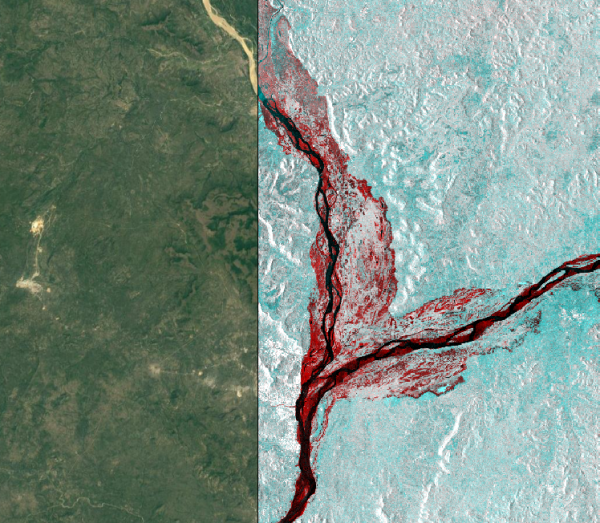SAR change detection with SNAP
In this tutorial we will use Level-1 Ground Range Detected (GRD) Sentinel-1 data downloaded from the Copernicus Open Access Hub. The example are fire events during 2015 in a peat forest located in Eastern Jambi, Sumatra, Indonesia.
Contents |
Data transfer
Download example tutorial data from Jambi or data from your personal region of interest: two Sentinel-1 scenes one pre-event acquisition date and one post-event date. Follow and adapt accordingly the instruction on Downloading Sentinel-2 images. Sentinel-1 data can have different characteristics (product type, polarization, sensor mode and ascending/descending orbit). Make sure, that you have the same characteristics for both images. Set the sensing period from 01.06.2019 to 30.11.2019. Select Product type GRD and sensor mode IW. Download the images of the 06.06.2019 and 21.11.2019 (both GRD, VV/VH, IW, Descending).
Visualization of amplitude bands
- Open SNAP Desktop.
- Go to File → Import → SAR sensors → Sentinel-1 and select the downloaded zip files.
- Unfold the product folders and Mark the Aplitude_VV bands of both products.
- Right click Open 2 Image Window.
- Windows → Tile Horizontally. Both Amplitude bands are shown side by side geometrically linked to each other. The geometry ist still in sensor coordinates in Ascending mode.
Subsetting
To reduce the data volume subset the Sentinel-1 scenes.
- Zoom to your area of interest.
- Right click into the image and select Spatial Subst from View....
- Besides a spatial subset you could also select for single bands with this tool. Go to Bands subset and select Amplitude_VV.
- Click OK.
Please note: The image can still be in acquisition geometry, whereby the image appears mirrored.
Radiometric and geometric calibration
- Select the first subsetted image.
- Apply Orbit File
- Radiometric Calibration
- Multilooking 3x3
- Single Product Speckle Filter
- Range-Doppler-Terrain Correction
Change composite
- Click Load and browse to the graph file \geodata_lokoja\03_lokoja_change_composite.xml.
- Click the Write tab. Adjust the output directory to you local path.
- Run.
- Open QGIS.
- Data Source Manger --> Browser --> XYZ Tiles --> Google Satellite
- Load the change compoisite file with extension _Stack.tif Data Source Manger --> Raster.
- Adjust opacity of the change layer on top of Google Satellite. Layer Properties --> Transparency --> Global Transparency.
